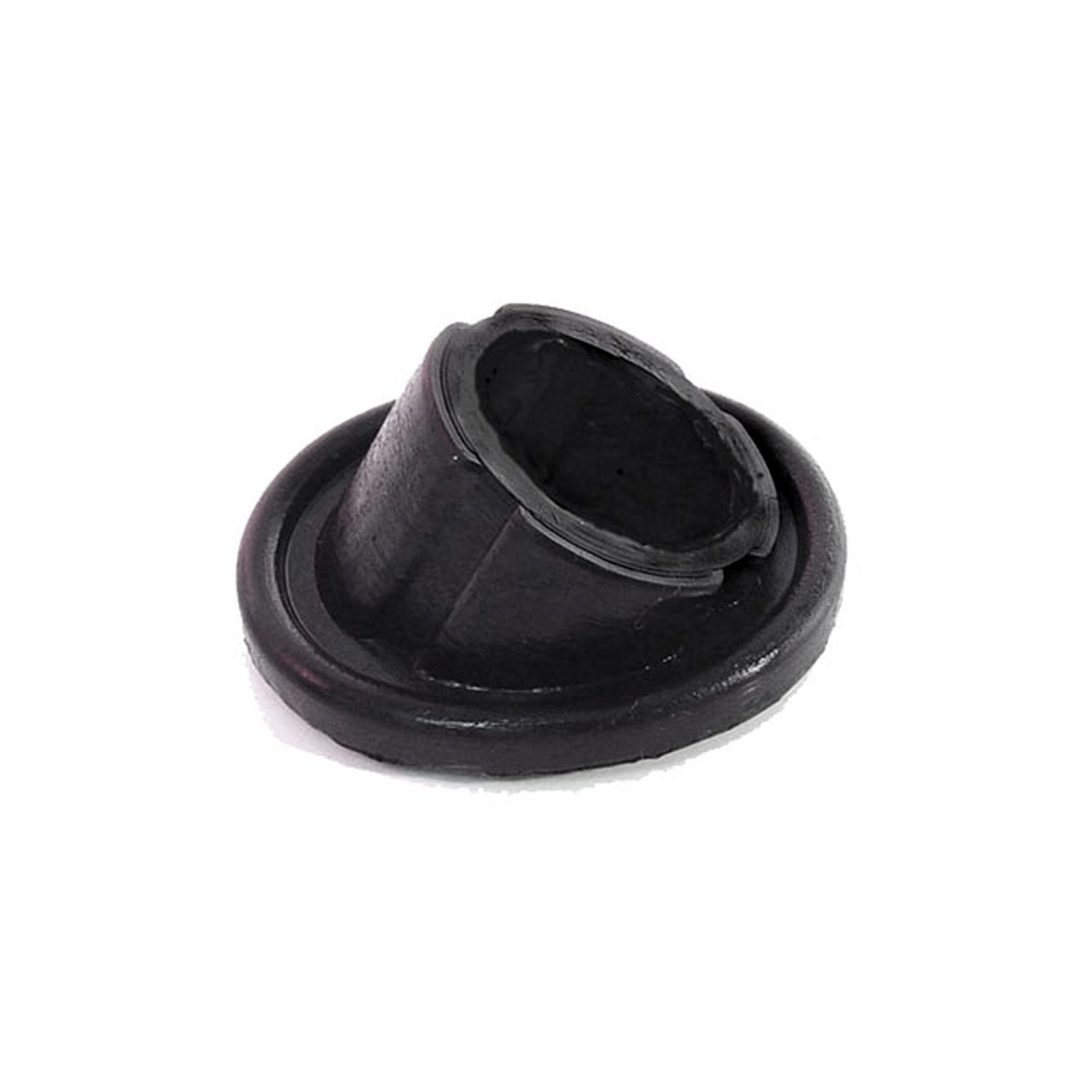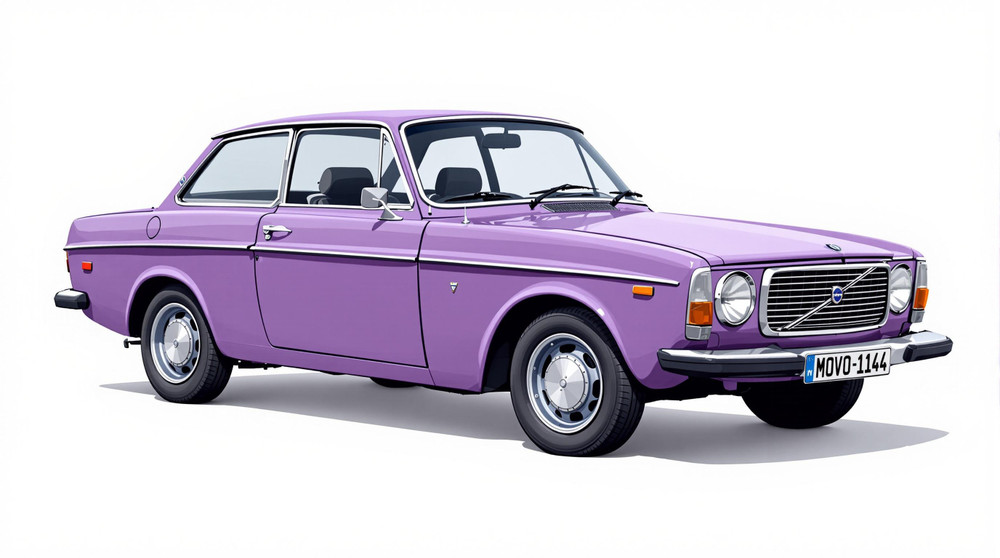Image of 1973 Volvo 144, Note: These illustrations use artistic license and may differ from actual historical models.
Performance Metrics
Fundamental Metrics
Emotional Appeal
MMP Rating
| Engine Specifications | |
|---|---|
| Engine: | B20 I4 |
| Displacement: | 1986 cc |
| Horsepower: | 82-100 hp |
| Torque: | 115 lb-ft |
| Compression Ratio: | 8.7:1 |
| Ignition System: | Electronic ignition |
| Cooling System: | Liquid-cooled |
| Performance Specifications | |
| 0-60 Time: | 12 seconds |
| 1/4 Mile Time: | Estimated at 18 seconds |
| Top Speed: | 100 mph |
| Transmission and Drive | |
| Drive Type: | Rear-wheel drive |
| Transmission Type: | 4-speed manual or 3-speed automatic |
| Fuel and Efficiency | |
| Fuel System Type: | Fuel injection |
| MPG: | 20-25 mpg |
| Dimensions and Brakes | |
| Brakes: | Front disc brakes, rear drum brakes |
| Wheelbase: | 104.3 inches |
| Weight: | 2,646 lbs |
Note: Specifications for classic cars are given to the best of our ability, considering the limited and variant data available.
Unveiling the Stalwart of Safety: The 1973 Volvo 144
The 1973 Volvo 144 stands as a testament to the Swedish automaker's unwavering commitment to safety and durability. Born in an era when automotive design was undergoing significant changes, the Volvo 144 emerged as a beacon of reliability and practicality. This model was part of Volvo's 140 series, which began production in 1966 and set new standards for vehicle safety that would influence the entire industry. A notable moment in the vehicle's history is its recognition for pioneering safety features such as crumple zones and a three-point seatbelt, which are now standard in modern cars.
Design and Innovation
The exterior of the 1973 Volvo 144 exudes a sense of robust elegance with its boxy silhouette and pronounced shoulder lines. The car's design is characterized by its upright grille, large glass area, and distinctive round headlamps that offer a friendly yet confident face to the road ahead. Inside, occupants were greeted with a functional and uncluttered dashboard, high-quality vinyl or cloth upholstery, and an emphasis on ergonomics long before it became an industry buzzword. Technologically, the 144 was ahead of its time with features like energy-absorbing steering columns and disc brakes on all four wheels. Color options ranged from conservative hues to more vibrant choices, with popular shades including Cypress Green and Dark Blue. The sedan body style was particularly iconic, though buyers could also opt for a station wagon variant that offered additional practicality.
Historical Significance
The Volvo 144 significantly impacted automotive safety norms. Its introduction of groundbreaking safety features set a precedent that would eventually be adopted globally. This car stood out not just for its build quality but also for its forward-thinking approach to passenger protection, influencing designs well into the future.
Performance and Handling
Performance-wise, the 1973 Volvo 144 was more about steady progress than speed. With a top speed hovering around 100 mph and an acceleration from 0-60 mph in about 12 seconds, it prioritized reliability over racing. However, its handling was commendable; the car's robust suspension system absorbed bumps with ease while providing stability on windy roads. Driving the Volvo 144 was an exercise in tranquility – from the reassuring hum of its B20 engine to the solid feeling imparted by its well-built chassis.
Ownership Experience
As a daily driver, the Volvo 144 excelled due to its practicality and ease of maintenance. Owners appreciated its straightforward mechanical layout that made DIY repairs accessible to many. While not typically seen as a show car or racing vehicle, it earned respect for its endurance and dependability.
Fun Facts
A fun fact about the Volvo 144 is that it was one of the first cars to be tested in real-life crash scenarios rather than just simulations – further cementing Volvo's reputation for safety. While some critics found it too conservative in style or underpowered compared to sportier contemporaries, these aspects have become endearing qualities to classic car enthusiasts today.
Collector's Information
Today, collectors might find a well-maintained 1973 Volvo 144 valued within a range from $5,000 to $20,000 depending on condition, originality, and provenance. While exact production numbers are elusive, it's estimated that several hundred thousand units were produced during the entire run of the 140 series. As classic car values fluctuate over time, this model has shown a steady appreciation among enthusiasts who value its historical significance and robust construction.
Conclusion
The 1973 Volvo 144 may not have been designed as an icon of performance or luxury; however, it carved out a legacy as one of the safest and most reliable vehicles of its time. Its influence on automotive safety is undeniable, making it not just a piece of history but also a continuing inspiration for vehicle design and engineering. For those who value these qualities above all else, the Volvo 144 remains a cherished classic.
1973 Volvo 144 Catalog of Parts
 1973 Volvo 144 Wiper Post Gasket. For wiper transmission-SM 35-BWiper Post Gasket. For wiper transmission. Two used per car. Each
1973 Volvo 144 Wiper Post Gasket. For wiper transmission-SM 35-BWiper Post Gasket. For wiper transmission. Two used per car. EachWhy Choose Metro?
For over 100 years, Metro Moulded Parts has been the pinnacle of quality in classic car restoration parts. Our commitment to precision and authenticity in every component ensures a perfect fit and an OEM-level appearance.
- Expert Craftsmanship & Quality: Each part is a testament to our dedication to reliability and perfection, crafted from original designs and thoroughly tested.
- Advanced Technology: We use cutting-edge techniques to create flawless, long-lasting parts that surpass others in performance.
- SuperSoft Sponge – The Ultimate Door Seal: Not only are our door seals 30% softer than competitors', but they're also guaranteed to never leak. They effectively reduce wind and road noise, enhancing your classic car's comfort and driving experience.
- Proudly American: Our parts are a product of American craftsmanship, made in the USA with a spirit of excellence and heritage.
- Unrivaled Warranty: We back our products with a 30-year industry-leading warranty, a testament to our confidence in their quality.
Join us in preserving the legacy of classic cars with parts that are crafted for perfection, not just made.

